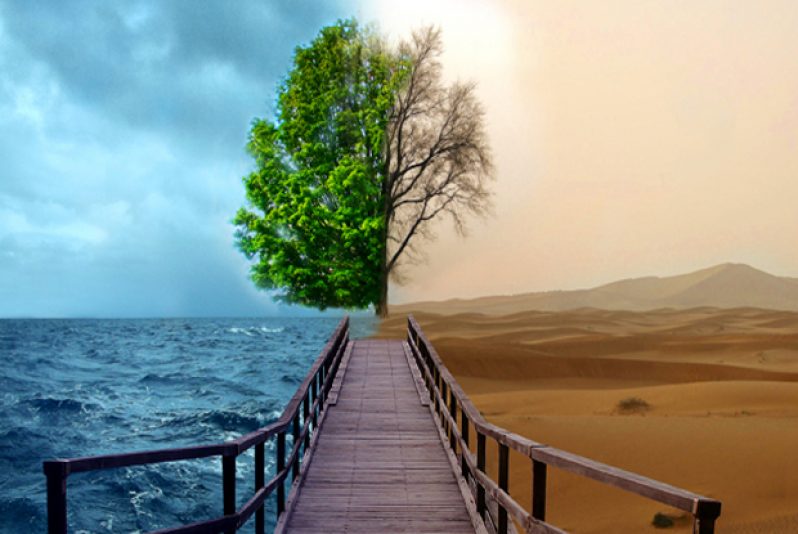SINCE 1992, at the United Nations Conference on Environment and Development in Rio de Janeiro, the international community has taken note of the unique challenges climate change poses to Small Island Developing States (SIDS), especially in terms of development. Although these countries are among the least responsible for climate change, they are the ones to suffer most from its adverse effects.Ninety per cent (90%) of the SIDS are in the tropics. This means that they are prone to extreme weather events such as tropical storms, cyclones and hurricanes. Dramatic changes in weather, along with droughts and flooding are key features of their weather pattern.
While SIDS have cultural, social, political, and economic differences, they have a lot in common as it relates to vulnerability to climate change and climate variability. These include:
o Natural resources, which are heavily stressed from unsustainable human activities;
o A concentration of population, socio-economic activities, and infrastructure along the coastal zone, e.g., in the Seychelles, about 80 per cent of the infrastructure and population are found along the coast and in Guyana, 90% of our population resides on the coast even though it only makes up 10% of our entire country;
o High susceptibility to frequent and more intense natural hazards such as floods, hurricanes, droughts, tsunamis and volcanic eruptions;
o Dependence on limited water resources which are highly sensitive to sea-level changes;
o Relative isolation and great distance to major markets, affecting competitiveness in trade;
o Generally high population densities and in some cases high population growth rates;
o Little diversification in the economic sectors;
o Inadequate infrastructure in most sectors;
o Limited physical size, e.g., if sea level rises by 1 metre, the Maldives will disappear entirely, and in Grenada, up to 60 per cent of the beaches would disappear in some areas following a 50-centimetre sea-level rise; and
o Insufficient financial, technical and institutional capacities, to minimise or adapt to any adverse impacts of climate change.
In SIDS, Climate Change poses a risk to natural resources such as water, biodiversity and coastal environments. It also threatens them socially and economically by impacting on agriculture and food security, settlements and infrastructure, health and tourism. In this article we will examine the impact on natural resources and next week we will look more in-depth at the social impacts of climate change on SIDS.
Water resources
The availability of freshwater is a major limiting factor for economic and social development in the SIDS. Many of these countries rely entirely on a single source of water supply, making them highly vulnerable to climatic and other environmental changes.
In SIDS where rainwater is the primary source of freshwater, water availability is dependent on rainfall patterns. A reduction in rainfall would decrease the volume of drinking water, and the amount of available freshwater.
Climate change and sea-level rise also affects water resources through saltwater intrusion into freshwater aquifers. The frequency and severity of droughts, as experienced in recent decades, may intensify in the future. Countries such as the Bahamas and Barbados, which are almost entirely dependent on groundwater supplies, will be seriously affected.
The coastal environment
The loss of land along coastlines due to sea-level rise is likely to disrupt all the economic and social sectors in SIDS. The most likely result of sea – level rise is flooding. There has already been evidence of this in some islands, with Papua New Guinea reporting that 25% of its existing shoreline has already been inundated. Guyana has also recorded some incidences of overtopping of the sea recently which triggered steps by the government to increase the height of the some sections of the Georgetown seawall.
Coral reefs play an important role in the lives of people in many SIDS. They break the force of waves along the coasts of many tropical islands, preventing erosion of beaches. They also provide habitats for marine animals and reef fish, providing food and generating significant revenues for many island economies through tourists interested in snorkeling and scuba diving. However, corals are easily affected by temperature increases. Currently, some species of coral live at or near their thermal limits. In fact, in Dominica, it is reported that 15% of its coral reef is showing some signs of bleaching. With projected increases in sea surface temperature, it is only likely the incidence of bleaching will rise rapidly.
Biodiversity
The long-term survival of the generally rich biodiversity on small islands has already been under threat from such human-related stresses as pollution and overexploitation. As in other regions, climate change will have direct and indirect impacts on the biodiversity of SIDS. Increases in carbon dioxide and sea-level rise would threaten the diversity of marine ecosystems such as coral reefs, the habitats of endangered species and the breeding sites of sea birds.
Guyana is already experiencing the impacts of Climate Change but has made significant efforts to help fight Climate Change through mechanisms such as the Low Carbon Development Strategy and steps to provide renewable sources of energy. Climate Change resilience can only come from wise environmental practices such as conserving, energy and water and by avoiding wastage of resources.




.jpg)








